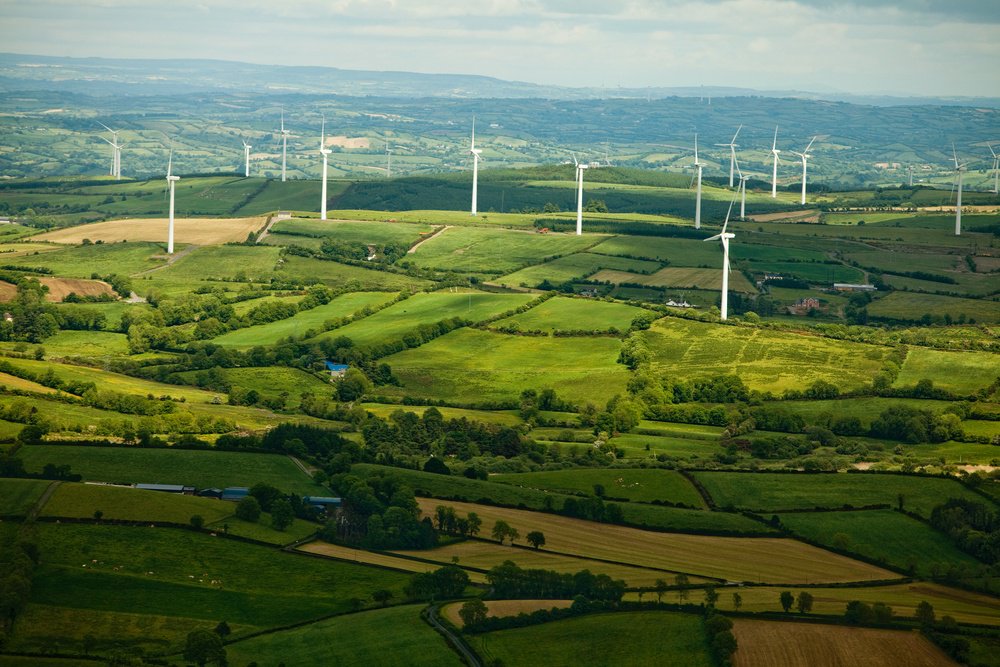In less than a decade, solar power will be economic in comparison to local fossil fuels globally, while wind will be economic in more than half of cases.
This is according to a new report from thinktank Carbon Tracker, which found currently around 60% of solar generation and 15% of wind generation is economic when compared to local fossil fuel generation.
As such, by 2050 the generation technologies could completely displace fossil fuels, offering instead a clean, cheap energy from inexhaustible sources that support new technologies such as electric vehicles and green hydrogen.
This is driven by huge drops in the price of generation from both sources with solar costs down on average 18% every year since 2010, allowing an energy reserve that can meet world demand 100 times over to be unlocked, according to The Sky’s the Limit report.
In 2019, global energy consumption was 65 Petawatt hours (PWh), but using current solar PV technology there is the potential to capture more than 5,800PWh annually. This alone is more in one year than burning all known fossil fuel reserves, and onshore and offshore wind could provide 900PWh annually.
Harry Benham, report co-author and chairman of thinktank Ember-Climate, said 1% of the world’s renewable resource would be enough to replace fossil fuel usage.
“Each year we are fuelling the climate crisis by burning three million years of fossilised sunshine in coal, oil and gas while we use just 0.01% of daily sunshine.”
The report suggests that building enough solar panels to meet global energy demand would take just 0.3% of land. This is less than the area currently occupied by fossil fuels.
For example, the world’s largest oil field, Ghawar in Saudi Arabia, covers 8,400 square kilometres and produces 0.9PWh annually. Covering the same area with solar panels would generate 1.2PWh, and if the actual oil field was covered it would generate 1.6PWh as Saudi Arabia is sunnier than average.
Solar has grown faster than any previous energy technology at this size the report notes, with an average increase of 39% a year over the last decade. The technology nearly doubled in capacity every two years, therefore.
Wind prices have fallen by 9% a year on average over the last decade, with capacity growing 17% a year. The growth of both technologies has helped drive efficiencies such as better panels and higher turbines, in itself driving further cost reductions.
With prices dropping so dramatically as capacity grows, the financial markets are taking advantage of the technologies with 2020 representing the first time clean energy companies raised more than fossil fuel companies through public offerings.
The opportunity varies from country to country, with emerging markets showing the highest potential as many are still building out their energy systems, and cheap renewables can offer a route to bringing power to more people. Economics, climate change and energy independence – as the fact 80% of people live in countries that import fossil fuels – were all highlighted as key drivers of change in the energy sector
Kingsmill Bond, Carbon Tracker’s energy strategist and report lead author, said the world is now entering “a new epoch, comparable to the industrial revolution”.
“Energy will tumble in price and become available to millions more, particularly in low-income countries. Geopolitics will be transformed as nations are freed from expensive imports of coal, oil and gas. Clean renewables will fight catastrophic climate change and free the planet from deadly pollution.”
Currently the biggest barrier to the adoption of more renewables is politics, The Sky’s the Limit notes. But as more countries recognise the potential the huge opportunity of renewables – with solar generating just 0.7PWh and wind 1.4PWh globally in 2019 – growth is still likely to continue.
Read more: CURRENT




